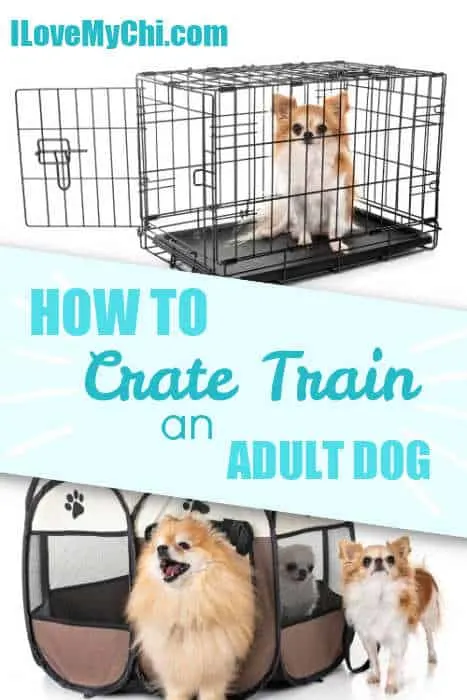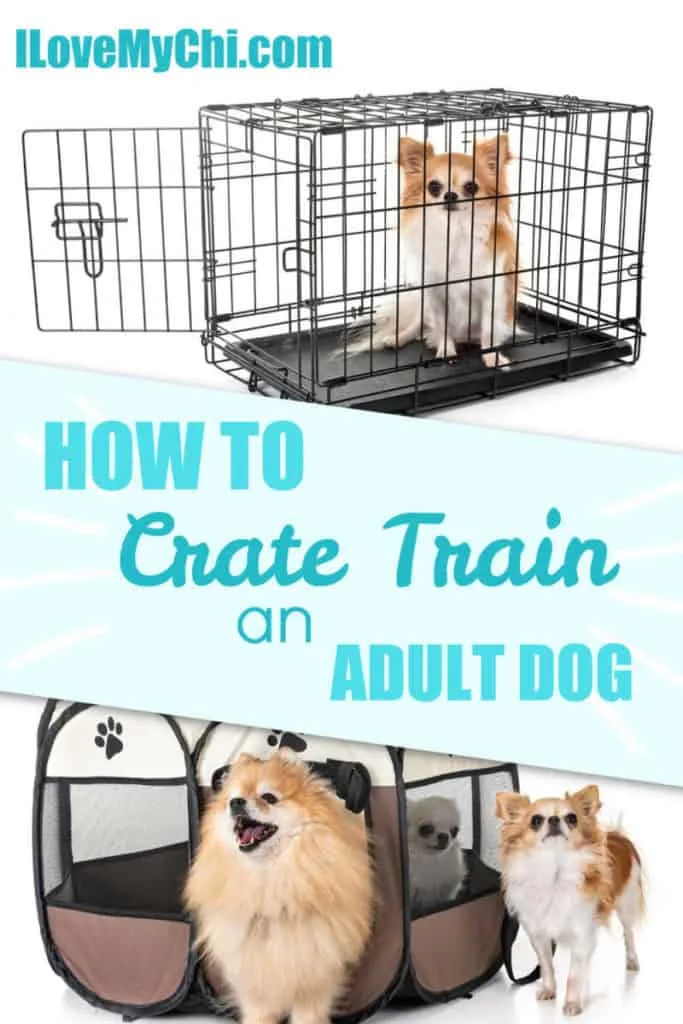New dog owners usually do crate training with their puppies. But, not everyone adopts puppies. If you have adopted an adult dog, you might need to train your new fur baby to use their crate.

Adult dogs need to learn where their special place is in your home, and as the new parent, it’s your job to show your dog the way. These steps help you with crate training your adult dog.
Pros and Cons of Crate Training
Crate training an adult dog can have both pros and cons. Before you decide that this is the right choice for you and your pup, you can take a look at both the good and the bad.
Pros:
- Offers a safe space for your pup
- Home will not be destroyed while you’re away
- Makes an easily portable space for your dog
- Can become a private haven for your furry friend
Cons:
- Your dog may relate this to a negative experience
- It takes a lot of training
- It could be stressful for dogs with an abusive history
Now that we have weighed out the pros and cons, if you still would like to learn how to train your adult dog to be comfortable in a crate, read on.
Choose a Dog Crate
If you are adopting a dog from a shelter or a previous owner, you should learn what type of crate the dog used before moving to your home. If your dog was abused or neglected at its last home, you should buy a different kind of crate.
You want your dog to have a fresh start, and the type of crate you choose will help achieve that goal.
Before selecting a soft-sided, plastic, or metal case, think about how you plan to use the kennel.
- Will you use the crate for travel?
- Will your dog eat and sleep in the crate?
- How often will your dog be in the crate each day?
Metal or plastic crates are good choices for house training because they are easy to clean. Soft-sided kennels offer more privacy, and they are useful for traveling. However, soft-sided crates are harder to clean, especially after house-training accidents.
You can find crates here on Chewy and here on Amazon.
If your adult dog likes to see what is happening around it, you might consider an open-wire or metal crate. The plastic kennels and soft-sided crates usually have windows, but most of the crate is closed off.
While considering the material and openings of the crate, you should also consider the size. Your dog needs to be able to stand up and turn while in the crate. You might think about buying a large kennel to give your dog extra room, but many dogs use that extra room as their toilets.
Begin Crate Training
Once you’ve got the crate, it’s time to start the training process. Rule number one is to never use the crate as a place for punishment. To get your dog to trust the crate, you must only use it with positive reinforcement techniques. Your adult dog needs to see its kennel as a safe place.
How To Build Crate Comfort
To start crate training, put the crate in your family room, and spend time in that room. Put a blanket or cushion in the crate. To make your dog even more comfortable, put an item of your clothing in the kennel, too.
Your dog will associate your smell with safety. If your dog doesn’t walk right in and nap, don’t worry. Some dogs need more training than others.
Your dog might need some coaxing to enter the crate, especially if your adult dog experienced stress at its first home. Call your dog to the kennel and put a treat near it. Reward your dog just for coming near the kennel.
Put a treat in the crate. If your dog enters the space, let it eat that treat and give it another one as well as encouraging words of praise.
You might have to repeat giving treats for going near the crate or in the kennel a few times. There is nothing wrong with your dog if it takes some training to go into the kennel independently.
Some dog owners report that it takes several days before their adult dogs will enter their kennels.
Connect Crates to Meals
Dogs will develop more comfort with their crates if they eat their meals in them. If your adult dog is hesitant about the crate, feed your dog near the crate.
You can even put the food inside – even partially in the crate – to help your dog get over its fear. Put the bowl deeper into the kennel until your dog calmly enters and stays in it.
Some dogs do not like having their crate doors closed. To train your dog to not fear the door:
- Close it once they enter to eat.
- Open it back up again.
- See if you can do that a few times while your dog eats.
To help your dog stay calm with the door closed, try to keep it closed during the entire meal. When your dog is finished eating, you can open the door again.
If your dog can stand to eat with the crate door closed, try to keep it shut for five to ten minutes more.
Teach Your Dog a Crate Cue
If your dog can eat in the crate with the door closed, it is time to teach them to spend more time in it. Call your dog to the crate and give it a treat.
Then, start to teach your dog your crate cue, the word you will use to tell your dog it is time to go in the crate. You could say “crate” or “bed” or any easy word that works for your family.
Use the treat and the word together several times as you point to the crate. When your dog goes into the crate, you can reward it. Then, close the door.
To help ease the transition to being alone in the kennel, leave the room for a short amount of time – no more than ten minutes. Come back, sit by the kennel, and watch your dog.
If your dog begins to whine while you are sitting nearby, do not reward that behavior. Instead, wait until your dog is quiet, then give a reward and open the door. To complete this training, you might have to do it a few times, increasing the time you are gone from the room.
Eventually, your dog will be able to spend the whole night in the crate.
Conclusion
To continue making the crate a positive space for your dog, be around as much as possible while your dog is in it. If you only crate your dog while you are away, your dog will associate the crate with loneliness.
Try to follow these steps to change a potentially negative experience for your dog into a rewarding one. With patience, positive rewards, and love, your adult dog will become crate trained in no time.
Check out this post if you are wondering if you should even try to train your dog to use a crate.



Alpianshutsa Exotlopnari
Thursday 4th of March 2021
I crate trained her and found some good potty pads on Chewy! Thanks!